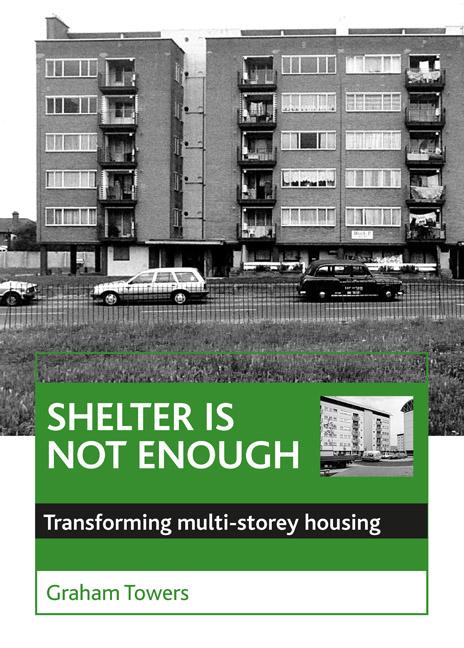Book contents
- Frontmatter
- Contents
- List of figures and tables
- Dedication
- Preface
- Foreword
- one Introduction
- two Forming the multi-storey legacy
- three Politics, economics and housing form
- four Social stigma and community action
- five Redeeming the estates
- six Facets of regeneration
- seven Building a model framework
- eight Prospects for transformation
- nine Ending the estate syndrome
- ten On broader horizons ...
- Bibliography
- Appendix: Case study research
- Index
Foreword
Published online by Cambridge University Press: 05 July 2022
- Frontmatter
- Contents
- List of figures and tables
- Dedication
- Preface
- Foreword
- one Introduction
- two Forming the multi-storey legacy
- three Politics, economics and housing form
- four Social stigma and community action
- five Redeeming the estates
- six Facets of regeneration
- seven Building a model framework
- eight Prospects for transformation
- nine Ending the estate syndrome
- ten On broader horizons ...
- Bibliography
- Appendix: Case study research
- Index
Summary
Multi-storey housing remains the enigma of the British housing system. Tenement or apartment, penthouse or tower block – the history and place of multi-storey housing continue to defy easy explanation. There has been no more controversial addition to the 20th-century urban scene than the public sector tower block. Initially praised for its efficiency and innovation, the received view is that such a structure is an aberration. The spectacle of ‘dropping a block’ counts for nothing against the loss of modern homes, and such a negative view continues to dominate our thinking on multi-storey housing.
Such stigma has also influenced the extent of scholarly activity in the area. Dunleavy's 1981 study of the construction of multi-storey housing stands as a beacon in the literature available; but over a dozen years separates it from Glendinning and Muthesius’ 1994 analysis of the ‘tower block’ phenomenon. Such accounts have focused attention on ‘why?’ and ‘how?’, but the experience of multi-storey living has been little studied, and largely subsumed within the broader question of the future of ‘council estates’. Such a limited literature does not reflect the extent of practical activity. After a late start, a range of refurbishment schemes have achieved changes in the fortunes of tenements and tower blocks. The impact and potential of such activity has been neither collated nor communicated, even its extent has gone unrecorded.
This book represents the first significant attempt to explore the place of multi-storey housing in the British dwelling stock, from its varied origins and chequered history, to its future as a valued urban resource. While the perspective adopted is informed by sociological and public policy analysis, this book makes a distinctive contribution by developing and applying a practical and positive model for the regeneration of a range of multi-storey housing. The relevance of such an endeavour in both a British and European context is fully recognised, and this book provides a powerful counterbalance to the received and mainly negative view of the multi-storey legacy. As Britain seeks to rethink patterns of urban development and the future of our older industrial cities, Graham Towers’ analysis provides a timely reminder of the continued, and growing relevance of multi-storey living.
- Type
- Chapter
- Information
- Shelter Is Not EnoughTransforming Multi-Storey Housing, pp. xivPublisher: Bristol University PressPrint publication year: 2000



